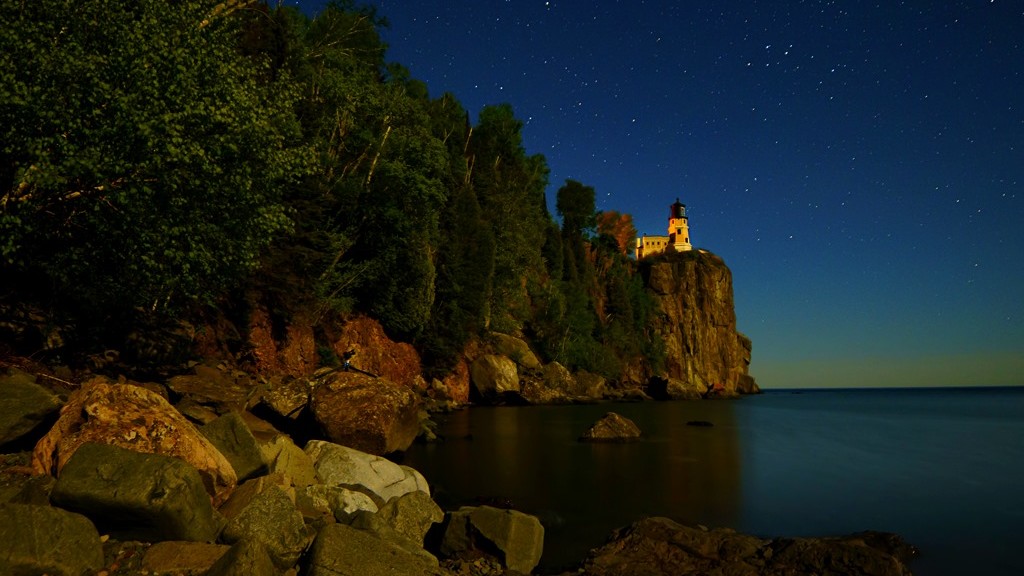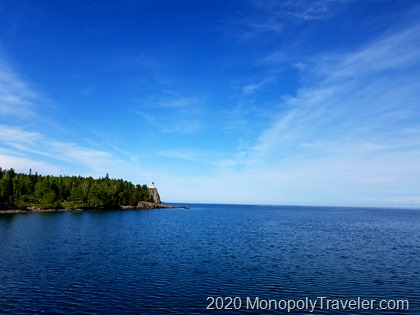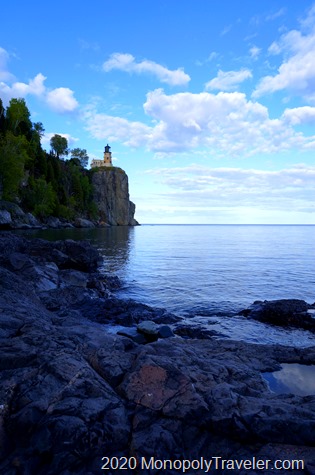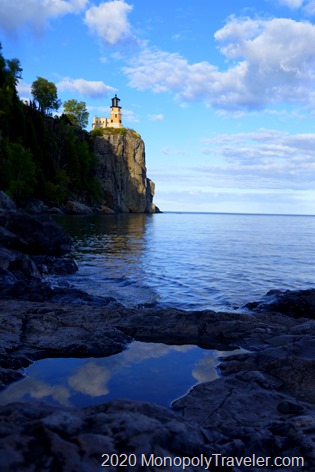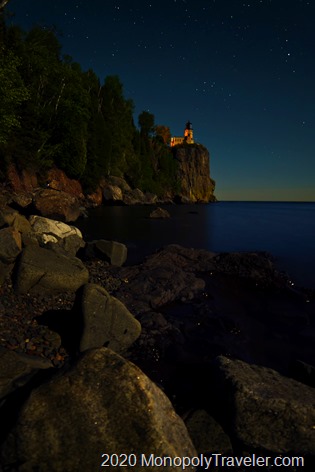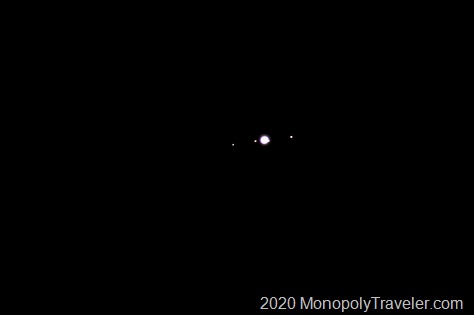After reserving my campsites at Split Rock Lighthouse last winter I began to explore different photographs I wanted to attempt to get. With several weeks passing pondering several ideas I finally decided I would love to capture the lighthouse under the Milkyway. The direction didn’t line up great but with the dark skies of the North Shore in Minnesota I expected to at least see a partial band of the our galaxy over Split Rock. Continuing my research I discovered the moon could be a problem as it would be nearing it’s full phase. Armed with this information I waited until the camping trip in June to make further preparations to capture the lighthouse at night.
During the afternoon, while at Split Rock Lighthouse State Park, I began to scout out potential locations and compositions. Starting from a distance I took a look at the overall scene attempting to figure out how much of Lake Superior I wanted in the photo and how much of the night sky I could get in a picture and still see the lighthouse well. From here I continued to move closer to the building as there was no way it would stand out this far away.
As the afternoon was nearing the end and evening was about to take over, I continued to climb over the sharp granite of Lake Superior searching for an interesting place to set up later that night. I began to feel more confident in a location to start at once darkness arrived. It may work well but it could be less interesting once the moon broadcast its light over the landscape.
Pressing on to find an alternative location or two I continued on closer to the lighthouse perched on top of a cliff overlooking the grand lake. Finding a couple more spots closer to Split Rock Lighthouse I was finally satisfied. Time had arrived to return to the campsite for a delicious dinner cooked over a fire and a little rest before journeying back during the night.
Now with a full stomach and the sun falling below the horizon it was getting time to head out. But now the days activities were beginning to wear on me and I was ready to crawl into my sleeping bag. In addition, the temperature was dropping quickly which had begun to penetrate through to my bones really causing me to question just how bad I wanted to go out with the camera underneath the dark sky. After fighting with myself for nearly 20 minutes I forced myself to get up, put on a coat, and grab the backpack containing my gear. Still reluctant to take the 15 minute walk to the lighthouse, I just kept putting one foot in front of the other until my motivation returned. I knew where I wanted to go and in no time I arrived. Scanning the scene now under moonlight, I became less convinced it was the spot for the photograph I wanted. Still I knew that if I didn’t pull out the camera and take a couple of shots I would likely not make it back here. What if this turns out to be the best location? After a few pictures, I wasn’t satisfied with my results.
The first thing I like to do is change my cameras orientation to see how that alters the scene. I liked this look better as the boulders became more prominent for a more complete picture. Still it wasn’t giving me the photograph I was after. The lower boathouse was a huge distraction under the near full moonlight and I couldn’t compose the shot in a way that the boathouse was removed and the lighthouse was located nicely. It was time to move closer as I suspected I would have to do. Under the moons illumination along with my flashlight I continued to crawl over the rocks slowly getting closer to the lighthouse and the cliff it guarded. By this time I was beginning to warm back up from my efforts to safely maneuver the rocky shoreline.
Finding a spot close enough to capture the lighthouse with stars above I scoured the shoreline seeking out boulders positioned in an interesting way to give me the picture I was attempting to capture. While doing this a voice called out from the dark. It was another photographer camped among the rocks photographing the Milkyway. Proof that each photographer sees things differently to create a unique picture. He had come here on a rare free night with no work the next day to capture the beautiful band of stars but having a difficult time due to the moon. I wanted to capture the Milkyway also but knew it would be a challenge due to the moon and altered my plan to use the moonlight to my advantage. It lit up the shoreline and lighthouse better than I could have expected creating a photograph that appears to have been taken during the day but then the stars shining above let you know it was not. It made for a scene very few people get to experience let alone photograph. It did take a bit of time to get an appropriate exposure due to this high light with a dark sky and water. Once I found a good exposure I kept snapping photos making little adjustments until I had what I thought would be a nice photograph. I actually like the picture above better than the one at the top of the post but that doesn’t show as well on the website which is why I used the landscape oriented picture for the post.
I decided to snap a couple of pictures of the Milkyway shining dimly in the night sky just to see how it would turn out. Some time I hope to work with the photo a bit more and see if I can extrapolate this band of bright stars more. While talking with the other photographer, he mentioned that using a good telephoto lens you could actually capture Jupiter with its four visible moons. Once I was done with my session at the lighthouse I headed towards my car to retrieve my Sigma 200-500mm lens and attached it to the camera. After a little searching through the viewfinder I spotted Jupiter. Focusing in on it I could definitely make out four other objects around it. These must be the moons! Playing with the camera a bit I snapped some photos before decided I had enough fun and was now cold again and ready for sleep.

